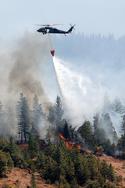A new report by the Center for Opportunity Urbanism, Beyond Gentrification: Towards More Equitable Growth, explores how unbalanced urban growth has exacerbated class divisions, particularly in the urban centers of our largest's metropolitan areas. To read or download the full report click here. read more »
Newgeography.com - Economic, demographic, and political commentary about places
Gentrification Is Failing in Los Angeles
If Los Angeles Mayor Eric Garcetti runs for president, he will no doubt point to the high-rises that have transformed downtown L.A. into something of a hipster haven. He could also point to fevered dense development, both planned and already in process, spreading across the Los Angeles basin, particularly near transit stops, as well as an increasingly notable art scene. read more »
- Login to post comments
The Bifurcated City
After drifting toward decrepitude since the 1970s, many core cities have experienced real, often bracing, turnarounds. Yet concern is growing that the revitalization of parts of these cities has unevenly benefited some residents at the expense of others. The crucial, and often ignored, question remains whether the policies that have helped spark urban revivals have improved conditions for the greatest number of residents. read more »
Today’s Cultural Engineers
Soviet dictator Joseph Stalin once labeled writers and other creative people “engineers of the soul.” In his passion to control what people saw and read, Stalin both coddled artists and enforced unanimity through the instruments of a police state. Today, fortunately, we don’t face such overt forms of cultural control, but the trends in American and to some extent European mass culture are beginning to look almost Stalinesque in their uniformity. read more »
- Login to post comments
Low-Density Fire Buffer
Someone in Bend must be reading this blog, or at least thinking along the same lines. In 2017, after the Wine Country fires had burned homes in Santa Rose, the Antiplanner noted that the problem was the homes were too dense and needed a buffer of low-density homes around them. I made the same point after the Camp Fire burned homes in Paradise.
Now Deschutes County is zoning a buffer between Bend and the national forest for low-density housing. read more »
- Login to post comments
Getting METRONext 2040 from B- to a real A+
METRO recently released a draft $7.5 billion 2040 transit plan they’ve labeled “A Plus” (the previous “A” plan plus some additions), but unfortunately it’s more like a B- when it comes to addressing Houston’s real transportation needs over the next two decades. It has some wonderful, cost-effective local and express bus improvements – including bus-rapid transit (BRT) at less than one-third the cost per mile of light rail – but continues to throw mountains of good money after bad on wasteful new light rail extensions. read more »
- Login to post comments
The Tech Economy’s Untold Story
The decisions by Amazon and Google to expand into the New York area have led some pundits to claim that the nation’s high-tech economic future will be shaped in dense urban areas. read more »
- Login to post comments
Pittsburgh & Rochester: Best 2018 International Housing Affordability
Pittsburgh and Rochester have the best housing affordability among 91 major markets (metropolitan areas with more than 1,000,000 population) in eight nations. Both have a median house price that is 2.6 times the median household income, a measure called the Median Multiple. This is the conclusion of the 15th Annual Demographia International Housing Affordability Survey, which rates housing markets based on estimates from the 3rd quarter of 2018. read more »
- Login to post comments
Lyfting Herself Up From Her Bootstraps
I occasionally find myself in an Uber or Lyft. I like to hear about the lives of the people who do the driving. They’re overwhelmingly from the distant suburbs and drive in to the city to collect fares. An hour away is the most typical distance. I ask why they don’t just drive near where they live. The numbers don’t add up. Not enough volume. The distances are too far and the empty round trips burn up miles with no income. And the price they get for each trip is geographically sensitive based on supply and demand. read more »
The Labor Market Is Changing: Is Your Company Ready?
Ever since the economy began to bounce back, with unemployment at an all-time low, the familiar refrain from pundits has been that growth, particularly of the higher wage variety, would head to the tech-oriented elite cities along the coasts. Yet, today, despite the headlines about Amazon’s expansions in New York and Washington, D.C., the real story is the aggressive growth taking place on a changing stage, both in terms of geography and changing labor demands. read more »
- Login to post comments





















